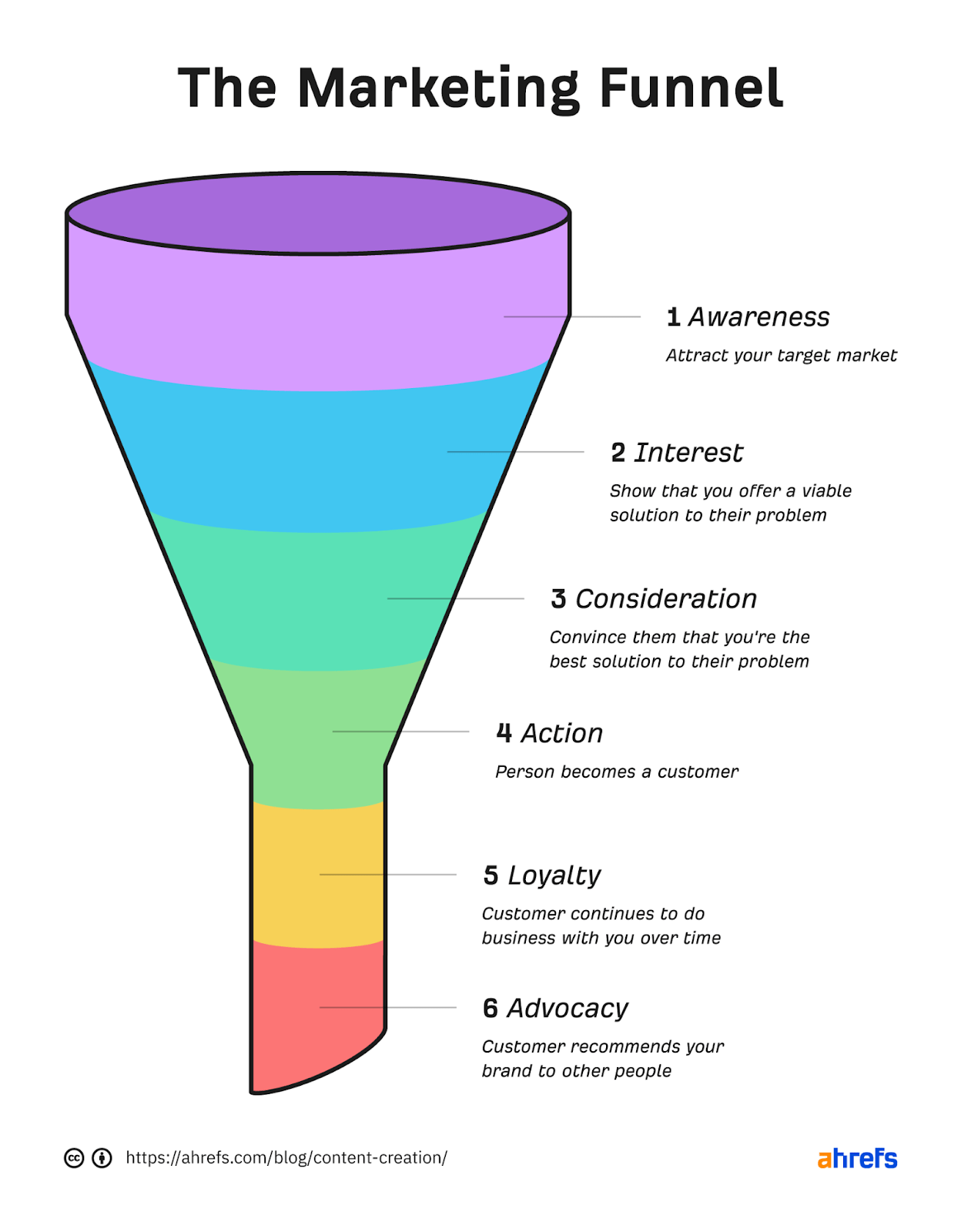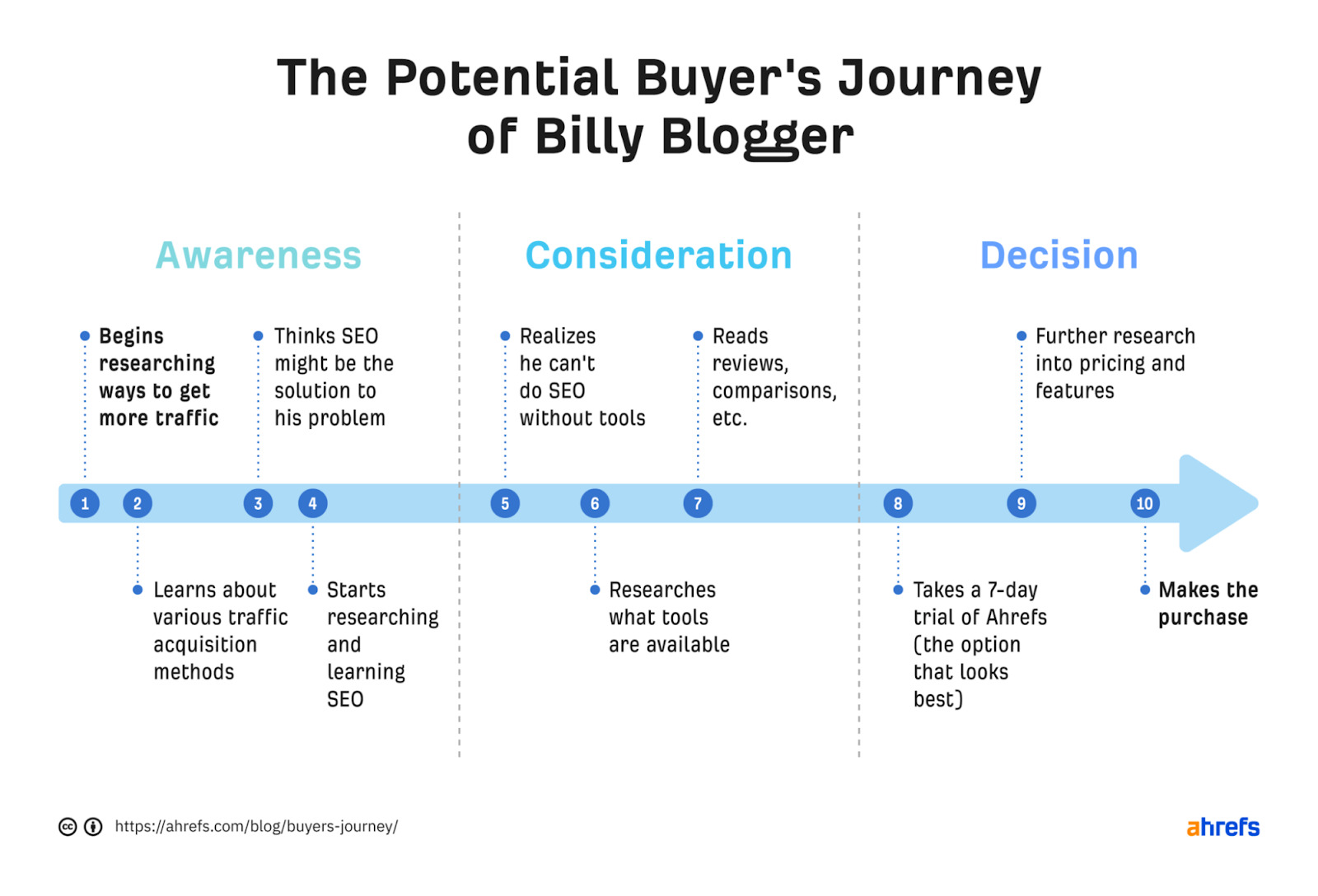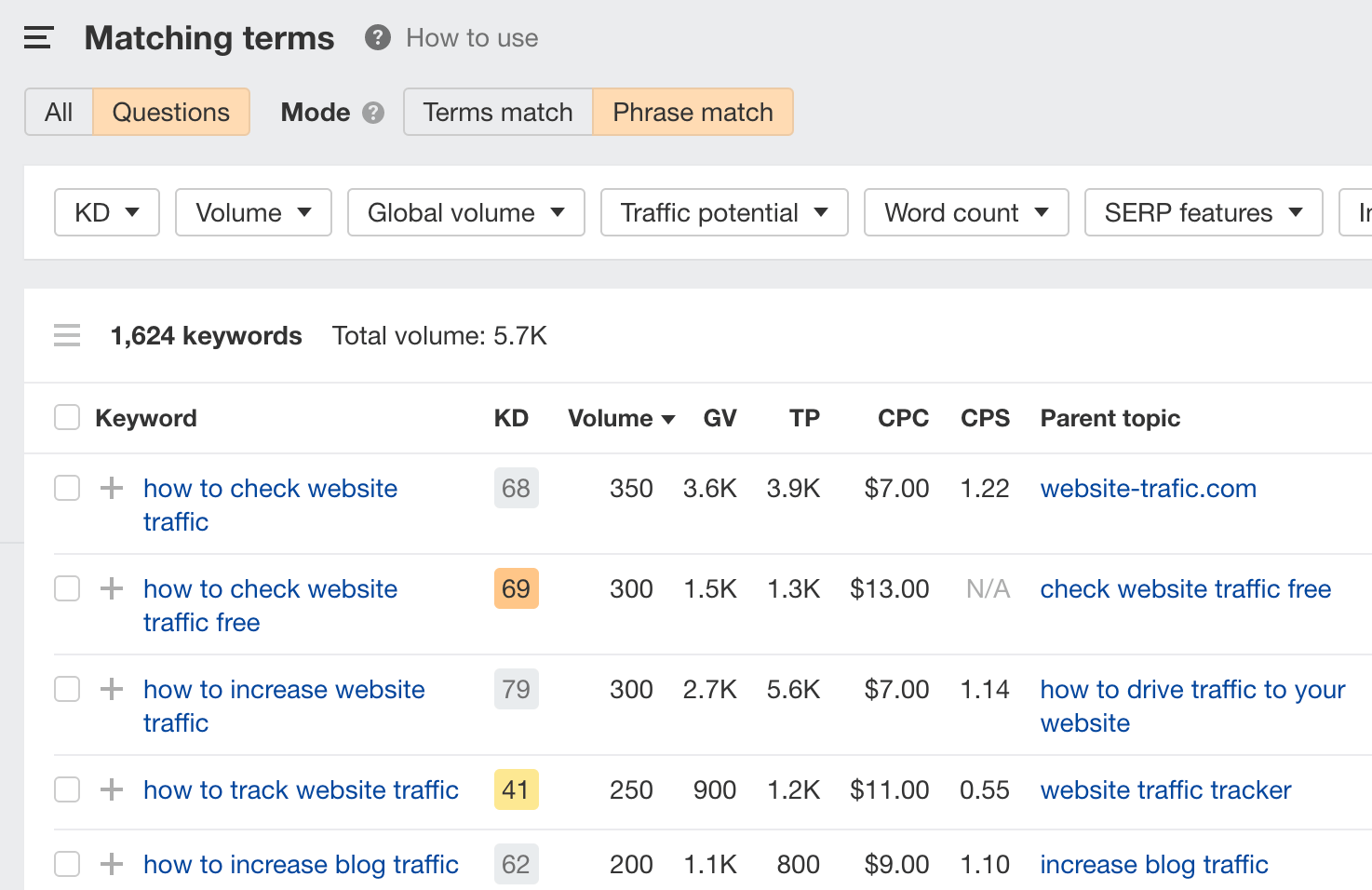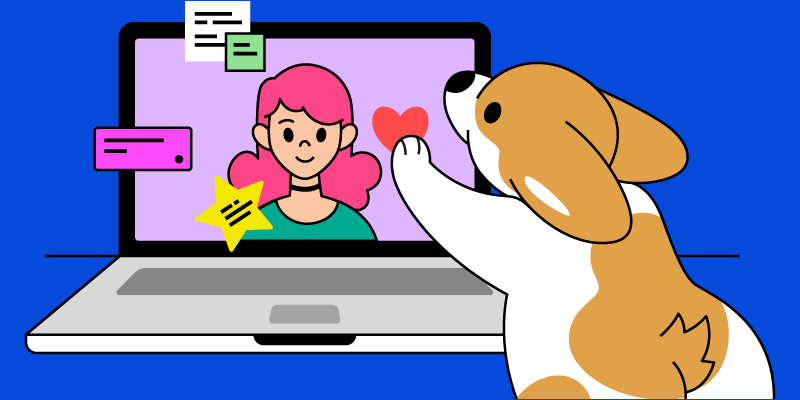Looking to create a buyer persona for your business? You’re in the right place.
Many companies have experience creating buyer personas. It’s usually done after a day of brainstorming in a meeting room. After the session, documents with demographic and psychographic details (married, have two kids, own a car, etc.)—appear, and the executives are satisfied. They’re even given names—Anna Agency, Billy Blogger, etc.—to remind the marketing team that they’re marketing to actual human beings.
But these “buyer personas” are then tucked into the recesses of Google Drive, never to be seen again. You spend time “identifying” these personas, yet they have zero effect on any marketing activities.
“We don’t use our buyer personas, but here’s the doc we made.“
Why bother making it if you’re not going to use it?
Let’s build a buyer persona you’ll actually use!— Adrienne Barnes😊 (@AdrienneNakohl) January 10, 2022
Why? Because these buyer personas were not created in the right way. As such, they’re not helpful and can’t influence a company’s marketing strategy.
In this post, we’ll learn how to create a buyer persona that you can actually use to impact your business.
A buyer persona is a semi-fictional representation of your target customers. They’re semi-fictional because while they’re not actually real people, they’re based on market research and data you have about existing customers.
While every customer is different, it’s almost impossible for most companies to address all of them individually. (There are exceptions, however, which is why account-based marketing exists.)
However, buyers do generally have similar wants and needs. So, rather than cater to every individual difference, a buyer persona allows you to address those similarities in your marketing.
For example, a hobby blogger and an in-house marketer are entirely different people on the surface. But they do have a similar goal: to get more traffic to their website. So, rather than targeting them differently, we can address the main issue—how to get more traffic—and attract all of them to our business.
Also, since the buyer personas you’re creating are born out of actual stories related to your buyers, creating a buyer persona will help you understand your customers deeply—how they think and make decisions, who they’re influenced by, and so on.
This will help you create and align your messaging, product, customer service, etc., with what your customers actually want and need.
Finally, a buyer persona helps you visualize your buyers. Many companies make the mistake of focusing too inwards and forgetting who their products are serving. A buyer persona serves as a reminder that you are selling to actual people.
Creating a buyer persona isn’t about downloading a template and filling it in. It’s about talking to real people and understanding their perspectives.
Here’s how to create a buyer persona:
1. Find people to interview
Creating a buyer persona means picking up the phone (or, these days, a Zoom call) and talking to your customers.
That means the first step is to find people to interview. Who should you talk to? The easiest group of people to start with—and the ones you should start with—are your customers.
Finding them should be relatively easy. You should have a customer relationship management (CRM) tool where you store your customer data. Look through the list and pick out those you’d like to interview. A quick way to narrow the list is to find your best buyers—those who have been with you the longest or spent the most money with you.
If you’re just starting out and have no customers, don’t worry. You should have a general idea of who your product or service is for. Reach out to these people and see if they would be up for an interview. You can probably find them in their respective communities on Facebook, Telegram, Discord, Slack, Twitter, Reddit, etc. You can also consider attending physical events like conferences and meetups.
At an early stage, these interviews can simultaneously act as customer development interviews and help you determine product-market fit.
Now, while you should talk to your customers, note that talking only to them isn’t enough. After all, these people have bought from you and used your products or services. They’re clearly satisfied with what they’ve gotten. So, interviewing them might only yield stories where your business got it right.
Everyone wants to hear good things, but knowing where you came up short is also important. So, beyond your customers, there are other people you should interview. Here are some options:
A. Your users
Users are people who have started a trial with you or used a free version of your product but didn’t convert into a customer. You have users if you’re a SaaS or even a gym that offers a one-month trial.
Again, this group of people should be relatively easy to find as they would have submitted their contact details to access your trial or free product. For example, if we wanted to interview our users, we could easily find everyone who signed up for our free Ahrefs Webmaster Tools but is not currently a customer.

B. Your sales prospects
This group of people either reached out to your sales team (e.g., for a demo) or talked to your sales team but did not purchase your product. They may not necessarily be users.
Likewise, your sales team should have the details of these people. Work with your sales team to identify who they are and reach out to them.
2. Reach out to them for interviews
Once you’ve identified a list of people you’d like to talk to, send them an email and ask them if they’d like to hop on a call with you.
Be honest and transparent. Tell them directly that you’re trying to learn more about your customers and that you’d like to hear about their experience.
Make sure to state the time commitment upfront so you don’t scare them away. 20-30 minutes should suffice for the interview.
Also, assure them that it is not a sales call. Especially if you’re interviewing your users or sales prospects, they might be wary that you will use the opportunity to segue into a sales pitch.
Finally, you can offer an incentive to show appreciation for your customer’s time. It’ll also help encourage take-ups.
Adrienne Barnes of Best Buyer Persona says that she has found that discounts on your product (especially when talking to your customers) have yielded great success. Alternatively, charitable donations to your customer’s charity of choice (under their name) are also a great incentive idea to try.
3. Interview them
With the interviews scheduled, it’s time to do the actual interview.
Before the interview begins, ask if you can record it. This is important because we’re not going to lean on our unreliable memories to try and parse out insights. And while note-taking during the interview is essential, excessive note-taking disrupts the session.
When your interviewee has signified an “ok,” you can start.
Adele Revella of Buyer Persona Institute suggests that you begin with this question, “Take me back to the day when you first decided to evaluate [the category of solution your product fits into] and tell me what happened.”
This should set the tone and allow your interviewee to relate their experience.
You can also ask questions based on Adele Revella’s famous Five Rings of Buying Insight:
- Priority Initiatives — What’s causing buyers to invest in products like yours? What about buyers who are satisfied with the status quo?
- Success Factors — What results does your buyer expect to achieve from buying your (or a similar) product?
- Perceived Barriers — What concerns do your buyers have regarding your product? What’s stopping them from buying?
- Buyer’s Journey — How do buyers evaluate their options?
- Decision Criteria — Which aspects of your competitors do buyers consider the most important?
From there, follow these tips to ensure a smooth interview:
- Give interviewees time to respond. Your interviewees are not robots with prepared answers to every question. Silence is golden—give them space and time to think through their thoughts and respond.
- Listen. Don’t insert your own opinions or defend yourself or your products. Your goal is to find answers, not sell or be judged by a court of opinion. Make sure to listen to what your customers are saying.
- Ask “why” and ask follow-up questions based on what they’ve said (and use the words they’re using). Your interviewees may not answer your questions directly or fully. Or maybe they might need prodding to provide more information. Don’t be afraid to ask follow-up questions and get them to clarify what they’re saying. You want to be on the same page. Even better: use the words they’ve been using so you can build rapport with them and get them to open up more.
- Don’t be afraid to guide your interviewees. It is likely that they will not answer chronologically. They might skip ahead and add a flashback to their story. You should feel comfortable slowing down the pace and guiding them back to the part of the conversation you’re interested in.
4. Organize your data
When the interviews are over, you’d want to get them transcribed. Use a service like Rev.com to turn them into text.
Next, it’s time to mark up your interview transcripts. You can then read through the transcripts and identify patterns (such as commonly repeated words and phrases) among what your customers are saying.
When you see two or more of the same pattern, create a category for them. The easiest way to create these “categories” is via the marketing funnel.

For example, say we interviewed a few of our customers at Ahrefs. Reading through the transcripts, we noticed that one commonly repeated phrase was “we wanted to figure out how to rank in Google for more keywords related to our business.” Since we sell an SEO toolset, we could easily file that under the category of “Interest.”
You can do all of this in Google Sheets.

An alternative method of marking up the transcript is to follow the Five Rings of Buying Insights.
5. Create your buyer persona(s) by segmenting your data
Finally, you’d want to segment your data into different audiences.
Here are some ways you can segment your audience, courtesy of Adrienne Barnes:
- The “jobs to be done” your customers bought your product for
- Pain points
- Usage
- Company size
- Industry
Sometimes there are clearly two different people you can see popping out of your data. Sometimes, there’s clearly just one “job-to-be-done,” so you only have one persona. How you segment and how many segments you should create depends entirely on your business and customers. There’s no perfect way to go about it.
Once you’ve identified your segments, transfer them into a document(s) with all the relevant qualitative data.
The goal of creating your buyer persona is to use them in your marketing. Not store them somewhere and forget about them.
So, here’s how to use buyer personas:
1. Positioning
Positioning consultant April Dunford writes that “positioning is the act of deliberately defining how you are the best at something that a defined market cares a lot about.”
You can use the information you’ve gathered to fix or adjust your positioning with what your customers care about.
2. Creating content for the different stages of the buyer’s journey
To create content for the buyer’s journey, you need to know who the buyer is. And you need to know how they progress through each stage until they purchase your product.
You now have both pieces of information.
For example, let’s say we’ve created a buyer persona at Ahrefs. We’ll call him Billy Blogger. And here’s Billy Blogger’s journey:

In the Awareness stage, Billy is struggling with getting more traffic to his site. So, if we’re creating content for this stage, we’re looking for topics related to:
- Website traffic
- Blog traffic
Here’s how we can find topics related to this stage to target:
- Go to Ahrefs’ Keywords Explorer
- Enter the above terms
- Go to the Matching terms report
Since the “Awareness stage” keywords are mostly informational, we’ll switch the toggle to Questions.

As you can see, there are over 1,600 potential topics we can target. However, since not all of them will be relevant to us, we’ll eyeball the list and pick out relevant ones.
We can repeat this step to look for topics for the other stages of the buyer’s journey.
Recommended reading: What Is the Buyer’s Journey? How to Create Content for Every Stage
3. Alignment with sales and product teams
With the information from your buyer interviews, you can help your sales team anticipate buying barriers, create relevant marketing and sales materials, and prepare tools and arguments for moving customers towards purchase.
Likewise, it can also help your product teams create products that customers want and remove friction from how they use your product.
Here are some frequently asked questions about buyer personas.
1. How many buyer interviews should I do?
To kickstart your process, aim to conduct at least ten interviews. But bear in mind that buyer interviews are not a “campaign.” Ideally, you should be doing this every month—meeting buyers, interviewing them, getting real-life stories and quotes, and updating your buyer persona document (where necessary).
2. What questions should I ask in the interview?
There’s no fixed set of questions to ask. Most of it should come spontaneously and naturally since there should be follow-up questions based on what your interviewee says.
Other than that, you should also be constructing questions based on what you want to know. And this depends heavily on your business, product, customers, and the existing information you have.
However, if you really need a set of questions to ask (or at least use as inspiration), I like this list from Mike Fishbein.
3. Should I include demographics and psychographics in my buyer persona?
In the introduction, I poo-pooed the idea of adding these details to your buyer persona. But they’re not all that bad.
You can add them if they’re actually useful to your marketing. Although there are plenty of times, especially in B2B and software, where this information is not useful.
I love this.
I’ve always kinda hated how ‘personas’ in marketing get a lot of elevation as a ‘thing’. 🤷🏻♀️
Personas for hands-on marketers? Useless.
What’s useful? Understanding target customer PROBLEMS, not PERSONAS. 🥁 pic.twitter.com/bxoQYYQwBO
— Fi Shailes 🥁 (@Fi_digitaldrum) December 1, 2021
Think about it: If you’re selling a martech software, does it matter whether ‘Charlie CMO’ is married? If his partner is the CEO or CFO, it does, but that’s an exceptional circumstance. Usually, it won’t impact your marketing.
However, it is useful if you own a wedding photography business. A married person doesn’t need wedding photography services, so demographic information such as marital status would be helpful to such a business.
4. Can I do surveys instead of calling my customers?
I know. Picking up the phone or hopping onto Zoom calls can be intimidating. But there’s no substitute for actually talking to someone.
Plus, surveys have to be designed by someone. And that someone can only design a survey based on their existing knowledge. That means a survey can be subjected to the designer’s unintended bias and therefore fail to discover new or unexpected insights.
Sidenote.
Interview questions can be subject to the interviewer’s unintended bias too. So make sure that you create open-ended questions and leave them to your interviewee to answer in any way they like. Do not insert your opinion or try to guide them to the answer you want to hear.
You don’t want to conduct multiple surveys and end up only perpetuating your confirmation bias.
Instead, use surveys to validate the insights you acquired via your interviews. See if the comments given by your interviewees are one-off or representative of a larger audience set.
5. How many buyer personas should I create?
Adele Revella writes:
The fundamental question isn’t how many buyer personas are required, but rather how many ways do you need to market your solution so that you can persuade buyers that your approach is ideally suited to their needs?
We can achieve this goal only if the way we define our buyer personas makes it easy to know when a different version of our story will result in more business for the company.
This is the reason why we’re less concerned with demographics but more with the “job-to-be-done.” When you segment by demographics, it’s tempting to create every variation after the sun—after all, there isn’t just Charlie CMO; there’s also Claire CMO, Chantelle CMO, CMO Chen, and so on.
However, since they are CMOs, they will have similar “jobs-to-be-done.” And if you find that to be true from your interviews, you can create one buyer persona to target them all. But if you find that some expectations are different, then that’s when you can consider creating another buyer persona.
If you think that creating another buyer persona can help you market your product better—like what Adele Revella says—then consider investing some resources to conduct additional buyer interviews to “prove” that this persona exists. Surveys can work, too—use them to see if your current findings apply across all segments.
6. Should you interview the “final decision maker” (e.g., CMO, CFO, CEO)?
In many companies, especially large ones, —the final decision maker is a higher-up. And traditionally, many sales teams are taught to target the final decision maker to sell their products.
In that case, should you take cues from the sales team? Probably not. That is because while the “final decision maker” gives the ok to buy, they may not be involved much in the evaluation process.
If so, interviewing them (if they’re even available in the first place) will not yield much insight. You’re better off interviewing people who are involved.
Final thoughts
This post would not have been possible without the work of Adele Revella and Adrienne Barnes. If you’d like to explore more of their work, I recommend:
- Reading Adele Revella’s book, Buyer Personas
- Listening to this podcast episode, where Adrienne Barnes explains how to create buyer personas
Any questions or comments about creating buyer personas? Let me know on Twitter.

